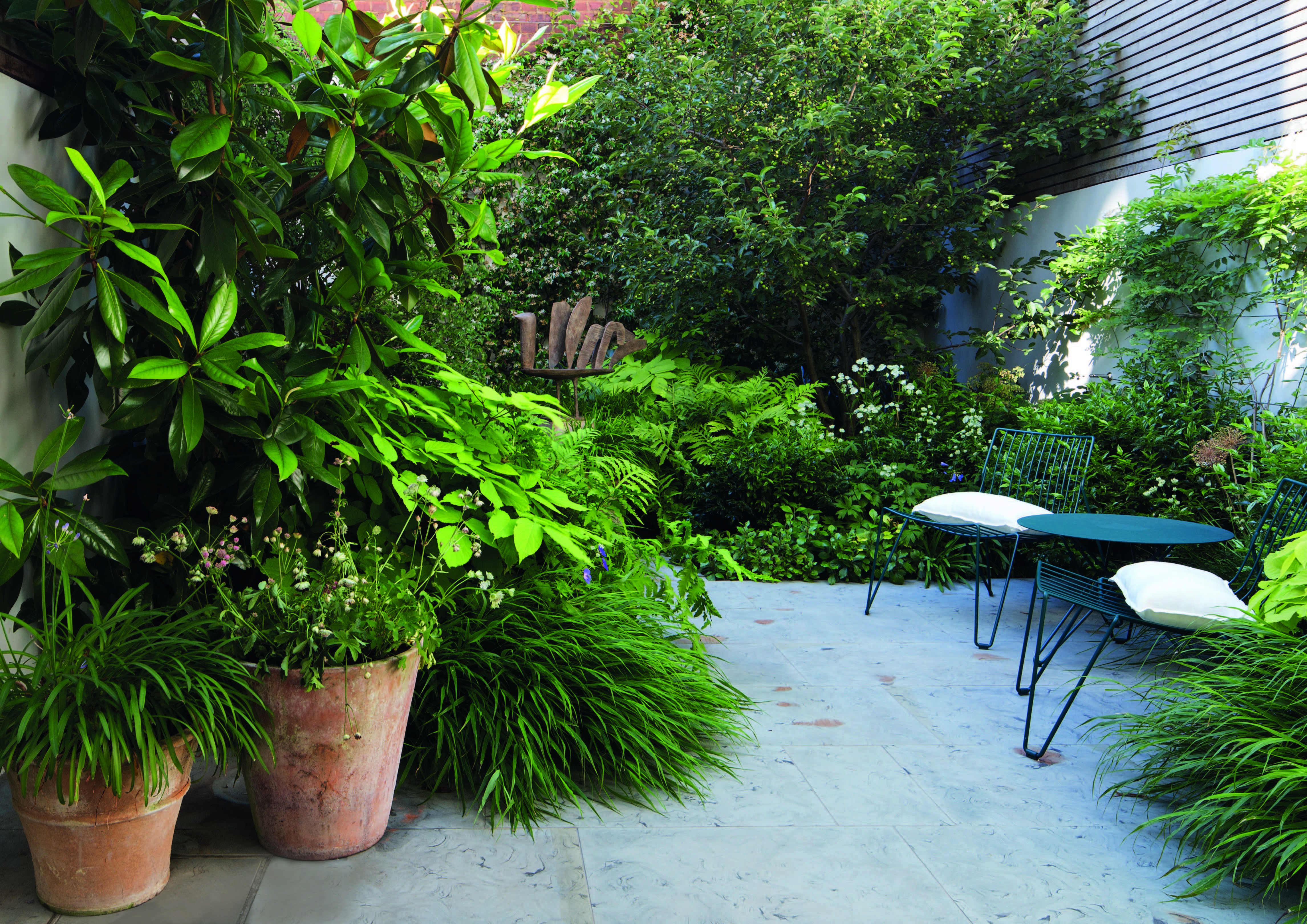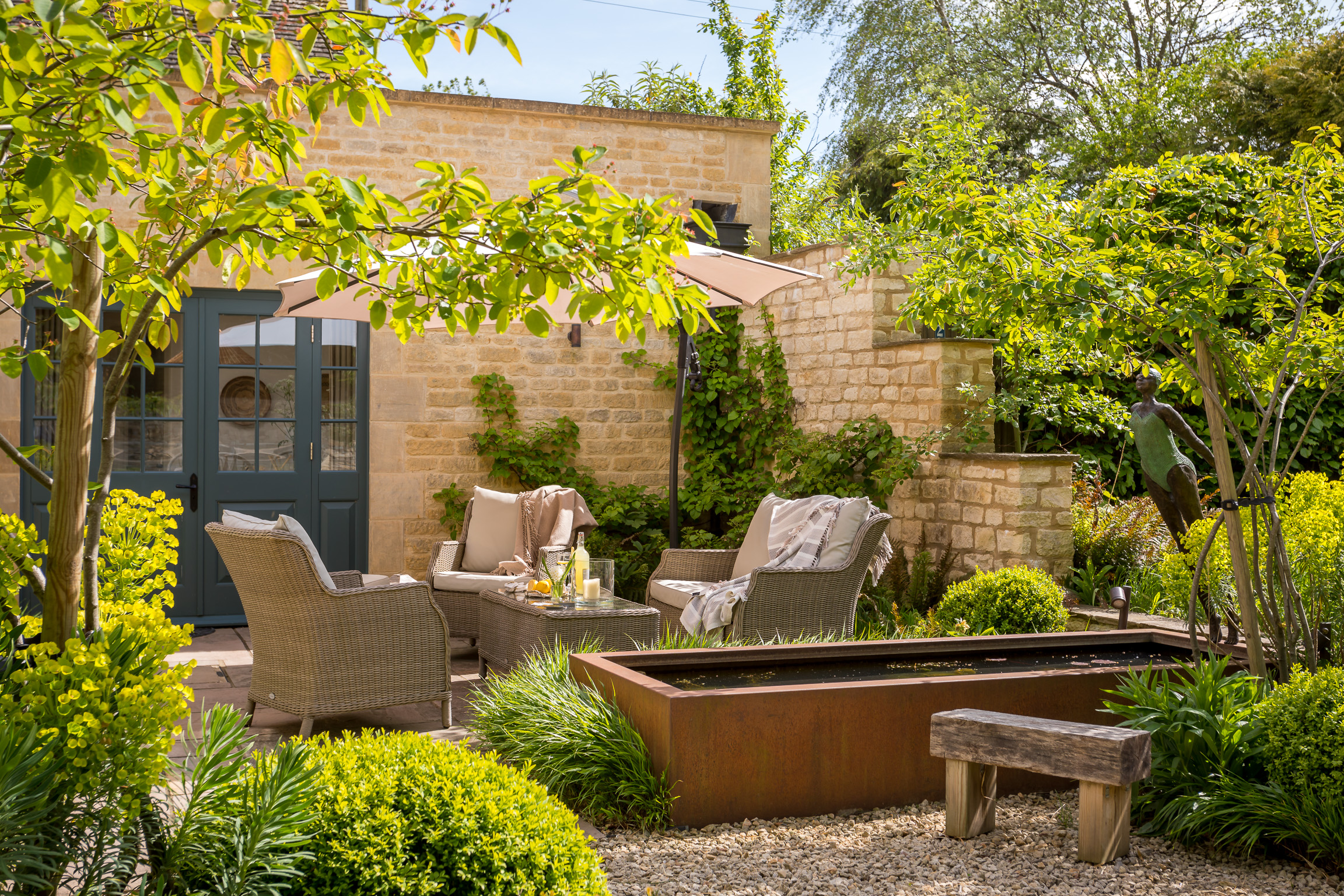GREEN & EASY GARDEN CHECKLIST
The SGD has created a Green & Easy Garden Checklist to explain how to create a low-maintenance garden that can still benefit wildlife and the environment.
1. Balance paving with plants
While hard surfaces are often seen as a good low-maintenance option, by balancing these with plants you can still help biodiversity and create a garden that is both sustainable and nicer to spend time in.
- Do not install large expanses of patio at the expense of greenery
- Always offset hard surfaces with plants, trees and shrubs to help nuture soils and provide habitats for wildlife.
- Do not pave or lay loose stone over the entire garden and think that a couple of plants in pots will do the trick - it is soulless, and the plants will dry out without regular watering.
- Mix stone paving with gravel or locally-sourced loose stone which can be planted through and will allow the soil to continue to breath.
- For pathways consider loose bark or self-binding footpath gravels which will help with drainage and run off.
- Use waste material from local quarries or reuse existing paving with permeable joints to provide opportunities for self-seeding plants to take hold.
2. Avoid plastic grass and user natural alternatives instead
Plastic grass is far from an eco-friendly alternative to natural grass. Not only does it have devastating consequences on biodiversity, but it also causes plastic pollution, leaks microplastics into waterways, causes flooding and contributes to urban heat islands and greenhouse gas emissions.
- Never lay artificial lawns - they are terrible for the environment, hot underfoot in the summer and still need maintenance.
- Consider using alternative low-maintenance lawns such as clover or chamomile or incorporating materials such as bark into play areas.
- Wildflower or perennial meadows can also be low-maintenance once established and will attract wildlife and the wow factor!
For more advice, download our ‘Say No to Plastic Grass & Plants’ campaign leaflet here.
- Think carefully about outdoor amenities
With the trend for outdoor amenities such as hot tubs, saunas, BBQ areas and outdoor kitchens continuing, you can reduce your carbon footprint without compromising your fun by thinking about the materials you choose and the features you include.
- Keep outdoor fire pits above ground as sunken pits require drainage and
 are often constructed with concrete and hard landscaping materials, which increases their carbon footprint.
are often constructed with concrete and hard landscaping materials, which increases their carbon footprint.
- Think about installing a natural swimming pond as an alternative to a hot tub – hot tubs need to be treated with chemicals and emptied between guests using vital water resources and energy to heat/ pump water whilst natural swimming ponds are fun, healthy and great for attracting wildlife.
- Mitigate the carbon footprint of any outdoor feature by increasing your use of plants elsewhere in the garden.
- Always opt for the greenest form of energy to fuel your outdoor features. For example, by using a wood-fired hot tub.
- When planning an outdoor kitchen, carefully consider what you actually need, so that only what you or your guests need to enjoy the experience is included. For example, will you actually use an outdoor fridge?
- Avoid unnecessary clearance of existing trees and shrubs by positioning items where there is already a space.
- Choose low-maintenance, year-round planting
Planting can make a huge difference to a garden and everyone in it. By choosing the right plants that will add character and interest without needing extensive maintenance, you can create an easy-to-keep, year-round garden. 
- Remove the need for regular mowing and watering by creating a low-input drought resistant gravel garden.
- Include a good proportion of evergreen plants such as Rosemary and Choisya.
- Mix shrubs with tough perennials such as Geranium that are self-sufficient once established and will return without fail each year.
- Don’t include too many perennials that require dividing, protection, excessive pruning or cutting back.
- Use grasses, long-season flowering plants and small evergreens which won’t outgrow their space, or large planters filled with architectural plants.
- Select plants that can cope with diverse extreme weather conditions including drought, heavy rainfall and flash flooding.
- Plant small specimens so that they can acclimatise to the growing environment, requiring less water to establish.
- Choose hard working species that flower for long periods and provide some habitat for wildlife, for example lavender and artemisia.
- In a small space consider vertical planting - an easy way of creating a pleasing environment with the added benefit of creating a cooling environment on a hot day.
Reduce, Reuse and Recycle
Reusing and recycling materials both in the home and garden is a great opportunity to reduce your environmental footprint.
- Wherever possible re-use existing or recycled materials. For example,
 reclaimed items such as galvanized steel agricultural water troughs or domestic water tanks make fantastic deep planters.
reclaimed items such as galvanized steel agricultural water troughs or domestic water tanks make fantastic deep planters.
- If using wood for structures, source from locally milled trees with FSC certified ratings.
- Don’t use cheap materials such as softwood decking. They don’t last and will need replacing within a year or two so it’s a false economy and a waste of resource.
- Specify and select quality products with a long lifespan so that adding these features in is as sustainable as possible.
- Always ensure built elements are constructed to the highest possible standard that will last the test of time.
- Always make sure that materials are straight forward to replace and recycle at the end of their lifespan.’
- Design in a hidden compost storage, allowing domestic waste to be recycled back into the garden.’
This list was compiled with contributions from SGD members:
Helen Elks-Smith FSGD, Sue Townsend MSGD, Alice Meacham MSGD, Matt Haddon MSGD, Jilayne Rickards MSGD, Lorenzo Soprani Volpini MSGD, George Cullis MSGD and Julianne Fernandez.